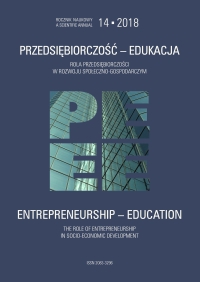Revitalisation of the Bagnoli District as a Factor of Economic Growth in Naples
DOI:
https://doi.org/10.24917/20833296.14.10Keywords:
Bagnoli-Coroglio, Naples, revitalisation, spatial developmentAbstract
The article presents the project of revitalisation undertaken in the post-industrial district of Naples - Bagnoli - situated strategically by the Gulf of Pozzuoli. The author focuses on the industrial development of the region, starting with its booming times during the post-war period, through the crisis of the 1970s, followed by a complete shutdown of factories in 1991. Since then, the area remained unused due to the great financial investments that would be needed to re-cultivate the land. Despite a lot of proposals to develop the land, it took 16 years to sign appropriate agreements and accept the project to revitalise the Bagnoli district. The project includes, among others, the creation of a public beach, tourism and sports infrastructure, housing estates and university campuses. It also includes building a harbour, which will enable a quick and convenient connection with the Nisida island and railway stations facilitating communication in the region. The aim of the article is to present the possibilities of development of the Campania region, focusing mainly on its capital. The ‘Bagnoli Futura’ project is one of the biggest ventures that will be carried out in the south of Italy in the upcoming years. It will provide great possibilities to develop not only the city of Naples itself, but the whole Campania region as well. Completion of the project is scheduled for 2024.References
Agenzia Regionale Protezione Ambiente Campania (ARPAC), http://www.arpacampania.it/
Boryczka, E. (2016). Rewitalizacja miast. W: Z. Przygodzki (red.), EkoMiasto Zarządzanie. Zrównoważony, inteligentny i partycypacyjny rozwój miasta. Łódź: Wydawnictwo Uniwersytetu Łódzkiego, 168– 194
Cirillo, C., Bertoli, B., Scarpa, L. (2016). Napoli e il paesaggio costiero: Il recupero ambientale di Bagnoli e la rigenerazione del Litorale Flegreo. W: VI Simposio-Il monitoraggio costiero mediterraneo: problematiche e tecniche di misure. Livorno: CRN Italia, 112–118.
Comune di Bari. (2015; 2017, 10 września). Relazione progetto vincitore Concorso riqualificazione San Girolamo – Relazione progetto vincitore. Bari. Pozyskano z: www.comune.bari.it
Comune di Napoli. (2017a, 20 września). Accordo Inter istituzionale Governo Italiano, Regione Campania, Comune di Napoli. Programma di Risanamento Ambientale e Rigenerazione Urbana Area di Rilevante Interesse Nazionale Bagnoli – Coroglio. Roma. Pozyskano z: www.comune.napoli.it
Comune di Napoli. (2017b, 18 września). Un nuovo modello per la trasformazione urbana di Bagnoli. Napoli. Pozyskano z: www.acen.it
Denis, M. (2016). Rewitalizacja tkanki historycznej miast szansą na odzyskanie tożsamości miejsca. Kwartalnik Naukowy Instytutu Rozwoju Miasta, XIII(IV), 139–147.
Fedele, C., Di Luccio, A. (2010). Consenso tecnico e integrazione trasporti-territorio: il Progetto Bagnoli. Pozyskano z: http://www.tema.unina.it/index.php/tema/article/viewFile/urn%3Anbn%3Ait% 3Aunina-3572/198
Isfort. (2014). La riqualificazione di aeree dismesse: Un progetto di aerea vasta. Roma.
Kazimierczak, J. (2014). Kształtowanie przestrzeni publicznej centrum miasta w kontekście rewitalizacji terenów poprzemysłowych w Manchesterze, Lyonie i Łodzi. Studia Miejskie, 16, 115–128.
Kozłowski, M., Yusnani, M. Y. (2010). Rewitalizacja wybranych miast Azji, USA i Australii: możliwości wykorzystania doświadczeń dla polskich miast. Problemy Rozwoju Miast, 7(2), 50–73.
Lorens, P. (2013). Obszary poportowe – problemy rewitalizacji. Szczecin: Instytut Studiów Regionalnych.
Noviello, M., Noviello, A., Noviello, F. (2015). Problemy rozwoju turystyki w Neapolu. W: A. Dłużewska, G. Iwanicki (red.), Geograficzne i ekonomiczne uwarunkowania rozwoju turystyki. Lublin – Krosno: Wydawnictwo ARMAGRAF, 137–146
Parysek, J. (2006). Wprowadzenie do gospodarki przestrzennej. Poznań: Wydawnictwo Naukowe UAM.
Sokołowicz, M.E. (2016). Rewitalizacja miast z perspektywy ekonomicznej. Reflekcje teoretyczne i ich konsekwencje dla praktyki planowania przedsięwzięć rewitalizacyjnych. Gospodarka w Praktyce i Teorii, 4(45), 57–68.
Stefanowska, A., Malec, K. (2015). Wpływ rewitalizacji na atrakcyjność turystyczno-rekreacyjną obszaru na przykładzie Zamościa. Turystyka Kulturowa, 8, 6–19.
Sztaba, J. (2013). Rewitalizacja szansą dla regionów poprzemysłowych. Miscellanea Oeconomicae, 17(1), 109–119.
Tota, P., Zapart, A. (2012). Waterfront jako jedna z dróg rewitalizacji terenów poprzemysłowych na przykładzie projektu dzielnicy Kleczków we Wrocławiu. Architektura-Czasopismo Techniczne, 109(1), 249–259.
Downloads
Published
How to Cite
Issue
Section
License
Articles are published under the terms of the Creative Commons License (CC BY-ND 4.0; Attribution– NoDerivs).

